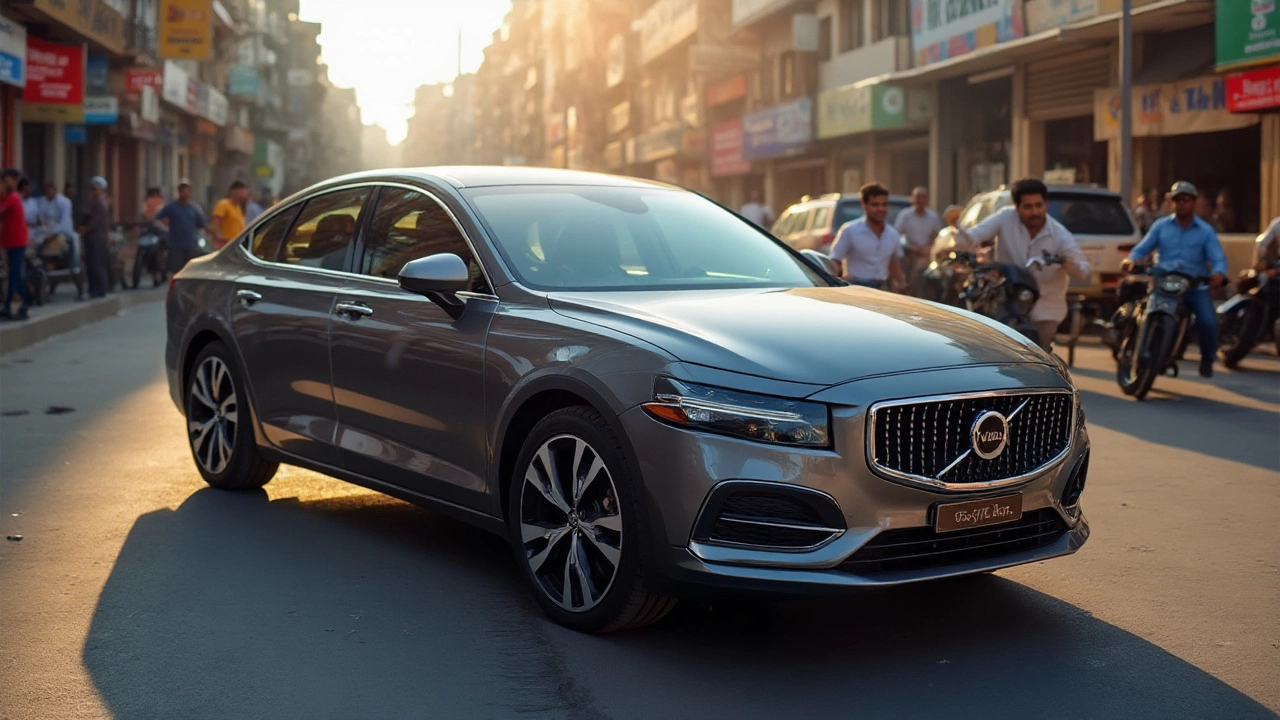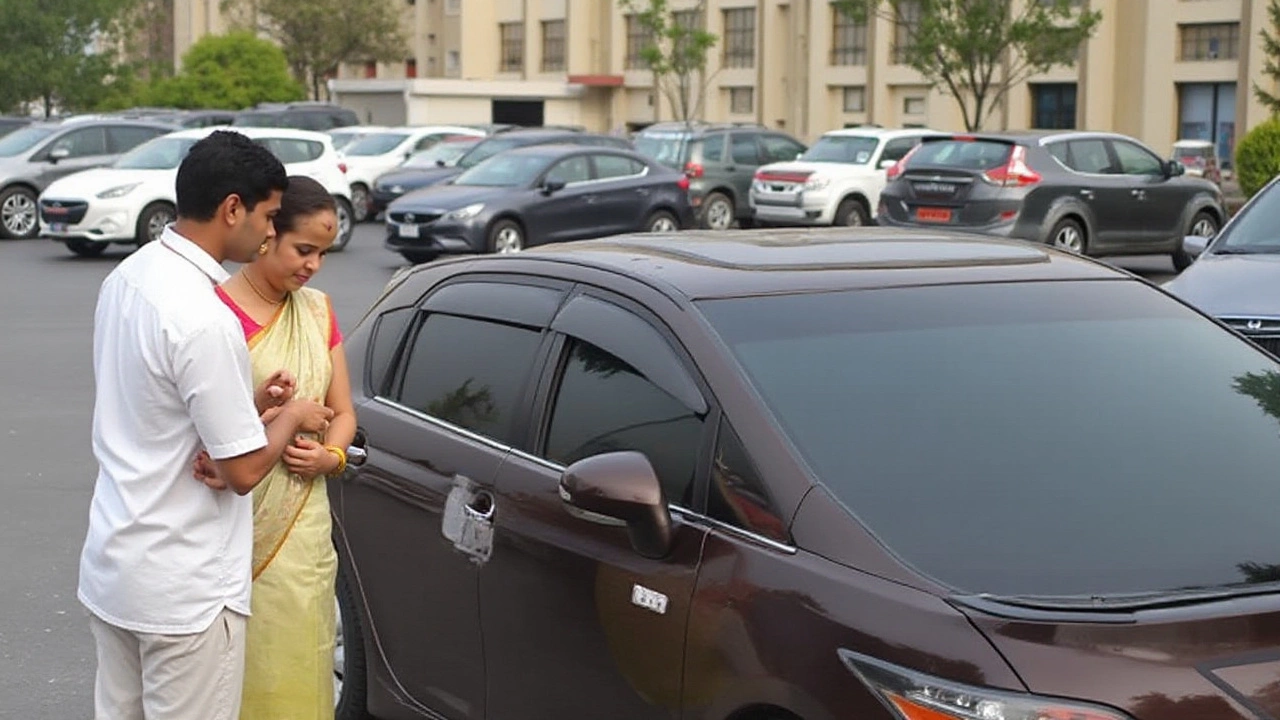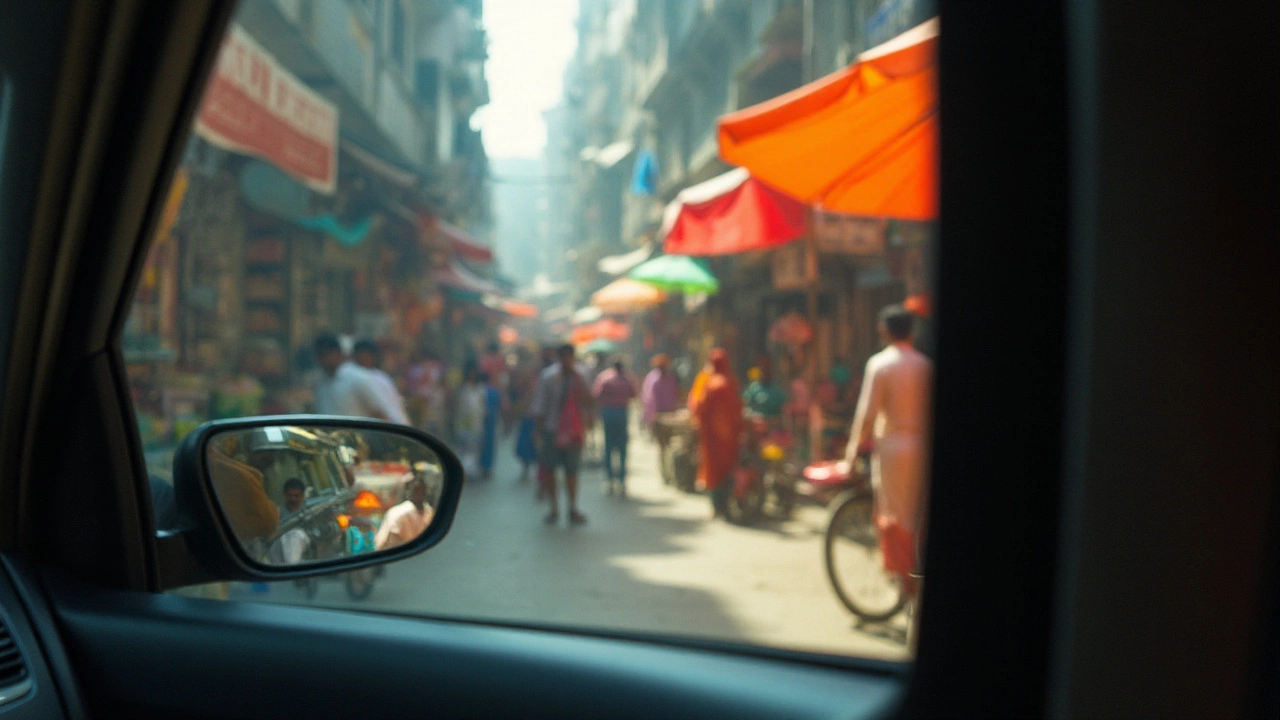Is 20% Window Tint Too Dark for Your Car?
 Jan, 7 2025
Jan, 7 2025
Deciding on the right window tint for your vehicle is a nuanced choice, influenced by aesthetics, functionality, and the law. One common question motorists grapple with is whether a 20% tint is too dark for their car. While opinions vary, understanding what 20% actually means is key to making an informed decision.
Window tint percentages refer to the amount of light allowed through the tint film and into the car. A 20% tint means only 20% of visible light passes through your windows, offering significant light reduction compared to higher-percentage tints. However, this can affect visibility, especially at night or in low-light conditions.
In this article, we'll delve into the specific advantages and disadvantages of using 20% tint, explore the legal restrictions you might face, and offer some practical tips for selecting the best tint for your vehicle. Whether you're looking for privacy, style, or heat reduction, knowing more will help you choose wisely.
- Understanding Window Tint Percentages
- Pros and Cons of 20% Tint
- Legalities and Regulations
- Tips for Choosing the Right Tint
Understanding Window Tint Percentages
Window tint percentages can be quite mystifying for the uninitiated, yet they're critical in determining the functionality and appearance of your vehicle's windows. Unlike assumptions that suggest higher percentages equate to darker tints, it's actually the opposite. A 20% tint allows only 20% of visible light to penetrate through the glass, making it a substantially darker option than, say, a 70% tint, which lets 70% of the light in. This inverse relationship often takes newcomers by surprise, as darker results stem from lower numerical values.
The science behind tinting involves the absorption and reflection of sunlight. Tint films are typically made of a thin polyester substrate on which different layers of dye and metalized material are imposed. These layers work cooperatively to block sunlight and heat from reaching the car's interior. This physical barrier not only adds to privacy and aesthetics but also plays a crucial role in protecting the car's cabins from fading and degrading due to UV exposure.
"Properly applied window films can block up to 99% of harmful UV rays," says John J. Peters, a renowned automotive specialist. "They serve as an important tool for preserving the longevity of car interiors."
When choosing a tint percentage, drivers frequently need to weigh personal and practical preferences against legal requirements, which vary significantly depending on location. While a lower percentage like 20% tint may offer a sleek look and an added degree of privacy, especially in urban settings, it can reduce rear and side visibility, elevating the risk during nighttime driving. Particularly in dim-lit roads or adverse weather conditions, the darker the tint, the more challenging it becomes to peer through it, which could potentially lead to accidents.
To illustrate this concept, consider a driver who often travels in rural areas at dusk. They may find a lighter tint percentage like 50% more suitable, allowing more light in while still offering some UV protection. On the other hand, a city dweller who parks streetside might prefer the privacy provided by a 20% tint, even if it means taking extra precautions when driving at night. Each percentage consequently aligns with different lifestyle needs and legal compliance, underscoring the importance of making informed decisions.
Understanding window tint percentages is not just about the numbers but comprehending how these films can alter the driving experience. For anyone considering tinting their vehicle, it's pivotal to research not only the aesthetic outcomes but also dive into practical implications. Armed with this knowledge, you’re more likely to strike the right balance and find a tint that suits both your style and safety preferences.

Pros and Cons of 20% Tint
Considering a 20% tint for your car windows is a decision that brings both advantages and disadvantages. On one hand, a 20% window tint can drastically enhance privacy by restricting visibility from the outside. Imagine cruising through busy streets while enjoying a cocoon of privacy that feels almost like an invisible shield. Moreover, this level of car tinting effectively reduces glare from the sun, which contributes to a more comfortable drive. It can also decrease the risk of interior fading caused by sun exposure, thus protecting your vehicle's upholstery and maintaining its value in the long run.
However, with these benefits also come some challenges. One significant downside is the potential reduction in visibility, especially at night or during overcast days. With only 20% of light permeability, identifying road hazards can be difficult in low-light conditions, potentially compromising safety. According to a study published in the Journal of Automobile Engineering, reduced light penetration can lead to longer reaction times, highlighting a critical trade-off for drivers. These safety concerns are mirrored by legal restrictions in certain regions, where specific levels of window tint might be prohibited. It's essential for drivers to check local regulations to avoid fines or mandates to remove the tint.
Another potential disadvantage is the perception of legality and law enforcement attention. Cars with darker window films may attract more scrutiny from police officers, leading to possible inspections or stops. This varies significantly depending on jurisdiction, as some areas are more stringent about window tinting than others. Nevertheless, for those who prioritize aesthetics, 20% tint provides a sleek and contemporary appearance. It offers a near-uniform look across the glass surfaces, which many car enthusiasts find appealing.
There's also the factor of heat reduction to consider. A study by the Energy Saving Trust noted that tinted windows can block a substantial percentage of solar heat gain, which contributes to greater climate control within the vehicle's interior. This means your car can remain cooler in hotter climates, potentially reducing the need for air conditioning and improving fuel efficiency. Nevertheless, the degree of heat reduction can vary based on the tint material's quality, so it pays to invest in reputable brands.

Legalities and Regulations
When it comes to window tint regulations, the laws can be a labyrinth of variances depending on where you are driving. This section dives into the world of legal stipulations surrounding car tinting, with a special focus on the enigmatic 20% tint. While most people look at tinting purely from a style or privacy perspective, the legal dimensions can be just as important, especially if you're aiming to avoid hefty fines or an unwelcome roadside chat with law enforcement.
In the UK, for instance, the law typically states that the front windscreen must let at least 75% of light through, while the front side windows must allow at least 70% of visible light to penetrate. This automatically makes anything like a 20% tint questionable for these windows, as it blocks a substantial amount of light. However, it’s a different ball game for the rear side windows and the back windscreen, where the law is more lenient, allowing for lower percentages of light transmission. This disparity often catches drivers off guard, as they might invest in a uniform tint level across all their windows only to find they are non-compliant on the roads.
Across the pond in the United States, laws vary significantly from state to state, sometimes even offering unique rules for different counties within the same state. For example, New York mandates that side windows must allow more than 70% of light in, similar to the UK, whereas states like Illinois allow tints as dark as 35% for front windows. In true Californian spirit, it's allowed to go as low as 70% on the front side windows, but the back and rear windows can sport any level of tint, giving drivers freedom in some areas and strict guidelines in others. This patchwork of laws makes compliance particularly challenging for frequent travelers crossing state lines.
It’s not uncommon to hear stories of drivers diligently peeling back tints on their travels or facing fines after moving to a different location. “I had what's known as ‘limo tint’ on my back windows—it looked great in Nevada, but when I drove through Oregon, I got stopped twice!” recalls one disgruntled driver via a post on AutoTintingForum.
The idea behind these regulations isn't just about vision and visibility, though that is a significant factor. Tints affect how well drivers can communicate visually with each other, impacting decisions like changing lanes or turning at intersections. Law enforcement officers also stress the importance of being able to see inside a vehicle, for both their safety and general regulatory purposes. Moreover, technology has added a twist, with some modern tints incorporating metallic and ceramic elements to block infra-red light, dramatically reducing heat inside cars without necessarily affecting visible light.
Given the legal complexities and the varying nature of these laws, it's advisable to consult local regulations before opting for a 20% tint. The last thing you want is to invest in a costly window film application only to be told to remove it at your MOT check or during a legal kerfuffle. Ultimately, ensure your tint choice balances your style preferences with practicality and legal compliance to enhance your driving experience both aesthetically and safely.

Tips for Choosing the Right Tint
Selecting the right window tint for your vehicle is not as straightforward as it might seem. The decision involves considering several factors, each playing a crucial role in ensuring you make the correct choice that complements your lifestyle and complies with local laws. Begin by contemplating the primary reason you are considering car tinting. Is it for privacy, to reduce glare, or maybe to enhance the aesthetic appeal of your vehicle? Answering this fundamental question provides a direction and helps narrow down your choices significantly.
For those living in regions with intense sunlight, heat rejection is often a top priority when choosing a tint level. The complexity here lies in balancing the darkness of the tint with its heat reduction capabilities. Interestingly, some high-performance films can reject more heat without being noticeably dark, a factor worth considering if you want to avoid overly dark windows like the 20% tint. Visibility is another critical component to take into account. While dark tints like 20% offer excellent privacy, they can significantly reduce visibility during night driving, potentially compromising safety. It's always a good idea to test several tint levels during different times of day before committing.
Understanding the legal framework surrounding window tinting is also vital. Each jurisdiction has unique regulations about how dark a tint can be, typically measured by its visible light transmission (VLT) percentage. A quick consultation with local authorities or a trusted auto shop can save you stories of frustration or fines. Importantly, even though some individuals argue that "rules are meant to be broken," sticking within legal bounds spares you from unnecessary encounters with law enforcement. An anecdote from a renowned auto expert states,
"More often than not, the most costly mistakes come from ignoring the little things, like local tint laws."
Let's not forget about the impact of window tint on your vehicle's aesthetic. Tints can dramatically transform the look of your car, offering a sleek and modern appeal. But style should complement function; this means that along with good looks, your chosen tint should protect the interior of your car from UV rays and reduce glare for optimal comfort when driving. High-quality films are durable and less likely to discolor over time, making them a better long-term investment.
Cost, inevitably, is a concern for most car owners. With window tinting, quality is often reflected in the price. While it might be tempting to opt for a cheaper option, remember that cheaper films can fade, bubble, or peel over time, creating an unsightly look and potentially leading to additional costs in reinstallation. Ideally, you want to choose a film that offers a balance between durability, performance, and price. Another helpful tip is to look for warranties that tint manufacturers provide; they offer peace of mind and ensure you get a product that stands the test of time.
Adding an informative twist, consider the installation itself. Professionally installed tints often offer better results than attempting a do-it-yourself job, especially if precision is not your forte. Professionals work in controlled environments to prevent dust and debris from getting trapped under the film, ensuring a flawless and enduring finish. Check reviews and get recommendations for reputable tinting services, or you might find yourself frustrated with a less than perfect job.